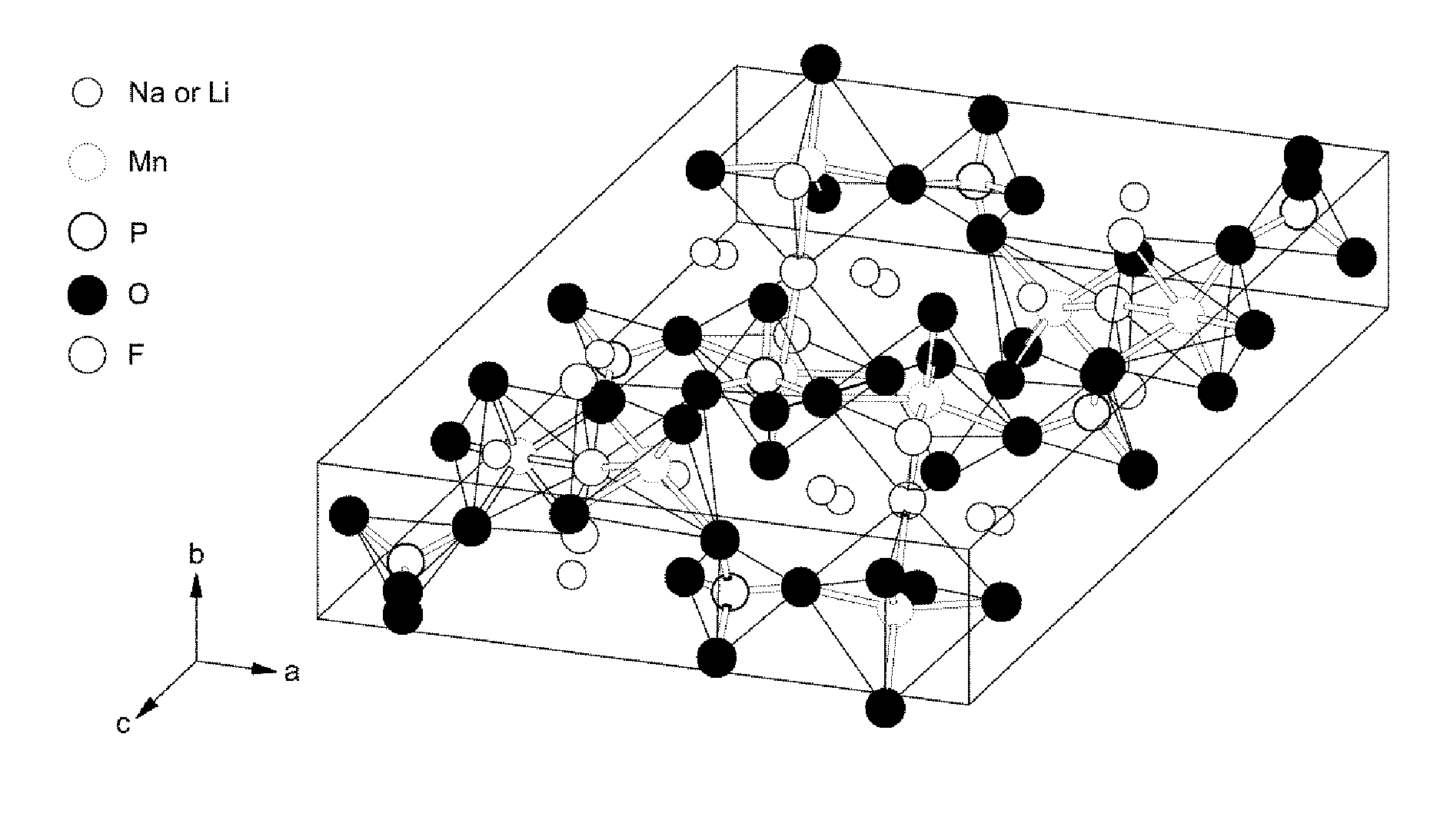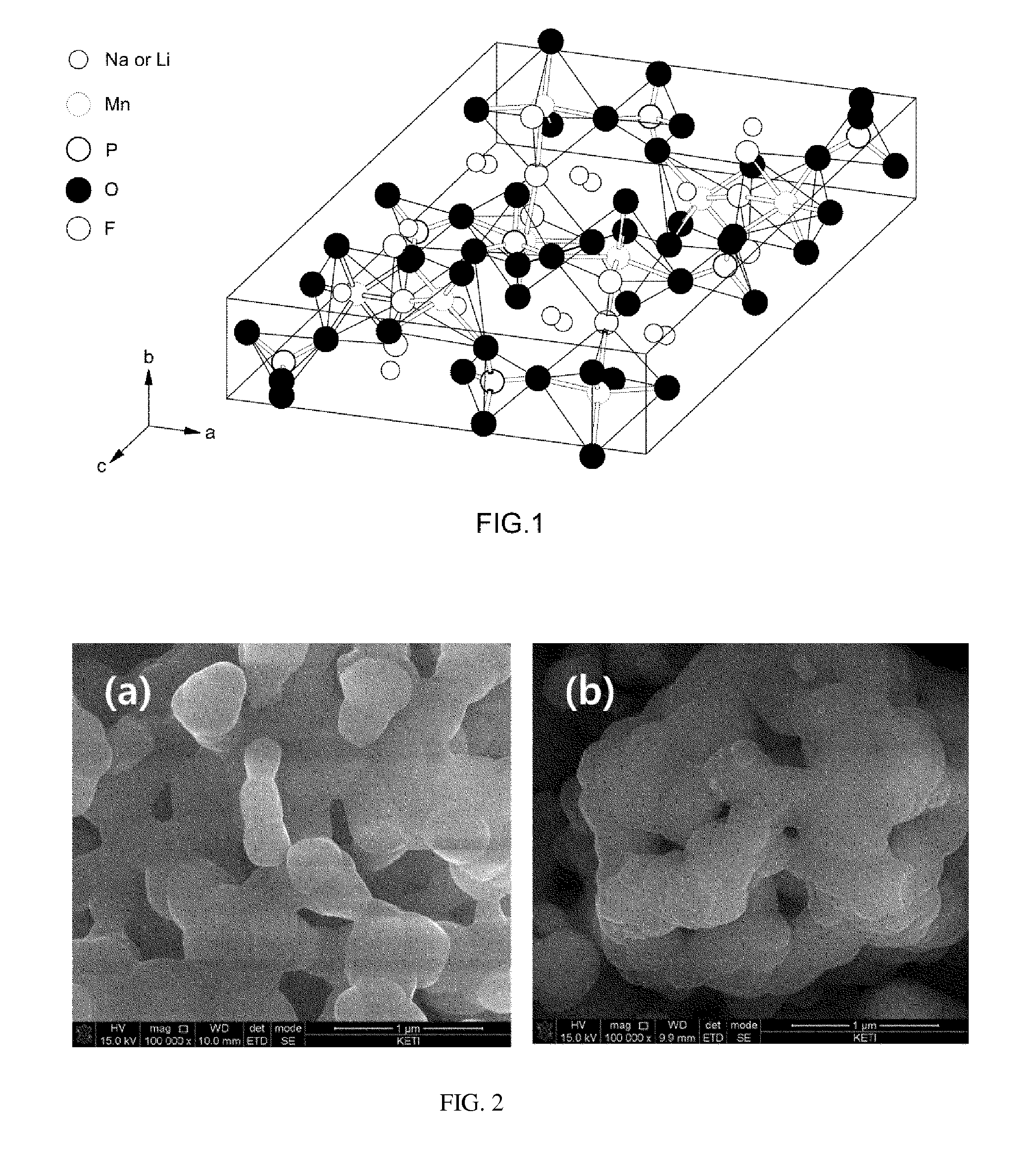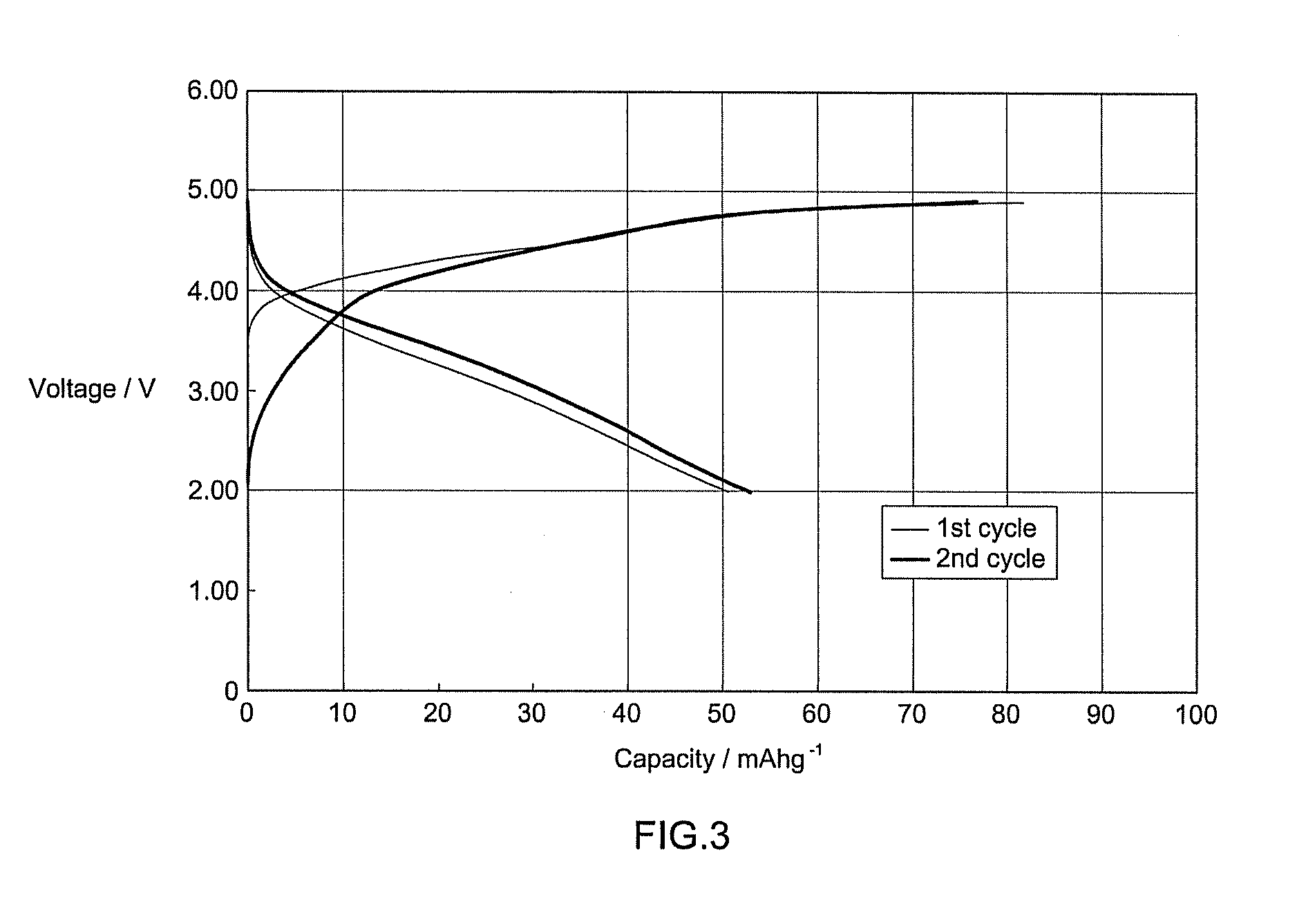Compositions and methods for manufacturing a cathode for a secondary battery
a secondary battery and cathode technology, applied in the field of compositions and methods for manufacturing a secondary battery, can solve the problems of lithium elution, battery fire or explosion, limited use of spinel-based lithium manganese oxide as a cathode material, etc., and achieve the effect of improving the electrochemical properties of the cathode and reducing the diffusion length of lithium
- Summary
- Abstract
- Description
- Claims
- Application Information
AI Technical Summary
Benefits of technology
Problems solved by technology
Method used
Image
Examples
example 1
[0061]Sodium carbonate (Na2CO3), manganese oxalate.hydrate (MnC2O4.2H2O), sodium fluoride (NaF), sodium hydrogen carbonate (NaHCO3), and ammonium phosphate (NH4H2PO4) were introduced in predetermined amounts with respect to the total amount of 10 g, and ball milled for 6 hours to uniformly mix the materials.
[0062]The resulting mixture was subjected to pretreatment at 300° C. for 2 hours under an air atmosphere, and fired at 500° C. for 6 hours under an argon gas atmosphere. Then, the resulting Na2MnPO4F was precipitated in acetonitrile including 0.6 M of LiBr dissolved therein, and reacted together with the flow of argon gas at a temperature of 80° C.
[0063]The test sample, in which ion exchange was completed, was washed with anhydrous ethanol to remove the remaining NaBr, and subsequently dried. Then, the resulting test sample was uniformly mixed with Super-P in a ratio of 75:25 by ball-milling and then, prepared as a cathode material composite.
example 2
[0064]Sodium carbonate (Na2CO3), manganese oxalate.hydrate (MnC2O4.2H2O), sodium fluoride (NaF), sodium hydrogen carbonate (NaHCO3), and ammonium phosphate (NH4H2PO4) were introduced in predetermined amounts with respect to the total amount of 10 g, and ball milled for 6 hours to uniformly mix the materials.
[0065]The resulting mixture was subjected to pretreatment at 300° C. for 2 hours under an air atmosphere, and fired at 500° C. for 6 hours under an argon gas atmosphere. Then, the resultant Na2MnPO4F was precipitated in acetonitrile including 1.0 M of LiBr dissolved therein, and reacted together with the flow of argon gas at a of 80° C.
[0066]The test sample, in which ion exchange was completed, was washed with anhydrous ethanol to remove the remaining NaBr, and subsequently dried. Then, the resulting test sample was uniformly mixed with Super-P in a ratio of 75:25 by ball-milling, and then prepared as a cathode material composite.
example 3
[0067]Sodium carbonate (Na2CO3), manganese oxalate.hydrate (MnC2O4.2H2O), sodium fluoride (NaF), sodium hydrogen carbonate (NaHCO3), and ammonium phosphate (NH4H2PO4) were introduced in predetermined amounts with respect to the total amount of 10 g, and ball milled for 6 hours to uniformly mix the materials.
[0068]The resultant mixture was subjected to pretreatment at 300° C. for 2 hours under an air atmosphere, and fired at 500° C. for 6 hours under an argon gas atmosphere. Then, the resulting Na2MnPO4F was precipitated in acetonitrile including 2.5 M of LiBr dissolved therein, and reacted together with the flow of argon gas at a temperature of 80° C.
[0069]The test sample, in which ion exchange was completed, was washed with anhydrous ethanol to remove remaining NaBr, and subsequently dried. Then, the resulting test sample was uniformly mixed with Super-P in a ratio of 75:25 by ball-milling, and then prepared as a cathode material composite.
PUM
| Property | Measurement | Unit |
|---|---|---|
| particle size | aaaaa | aaaaa |
| particle size | aaaaa | aaaaa |
| temperature | aaaaa | aaaaa |
Abstract
Description
Claims
Application Information
 Login to View More
Login to View More - R&D
- Intellectual Property
- Life Sciences
- Materials
- Tech Scout
- Unparalleled Data Quality
- Higher Quality Content
- 60% Fewer Hallucinations
Browse by: Latest US Patents, China's latest patents, Technical Efficacy Thesaurus, Application Domain, Technology Topic, Popular Technical Reports.
© 2025 PatSnap. All rights reserved.Legal|Privacy policy|Modern Slavery Act Transparency Statement|Sitemap|About US| Contact US: help@patsnap.com



